Half of a Super-Cooler: Phanteks PH-TC14CS Review

It seemed that the new Phanteks cooler had everything it takes to be a CPU cooling rock-star, except for one “little detail”: structure type. Unfortunately, the little detail had a big impact.
The Netherlands-based Phanteks has recently rolled out its second CPU cooler under the name of PH-TC14CS. Considering that their debuting product PH-TC14P? proved to be a huge success and took a leading position among modern CPU coolers, we may have high hopes about the company’s second.
But, frankly speaking, we got some apprehensions about the new cooler when we saw it for the first time. Its down-draft design with the heatsink in parallel to the mainboard and the air flow directed towards the latter has only one advantage over tower-design coolers: the mainboard components around the CPU socket are cooled better. But it doesn’t necessarily mean that the CPU itself is cooled better. With their heatsinks being smaller and not well-suited to the configuration of air flows inside popular tower system cases, down-draft coolers are generally inferior in performance. Let’s see if the Phanteks PH-TC14CS can make an exception to this rule.
Technical Specifications and Recommended Pricing
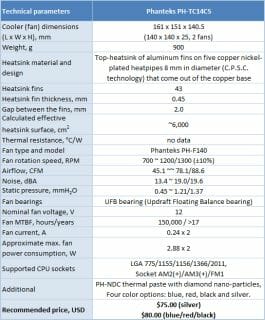
Packaging and Accessories
The cardboard packaging is identical to that of the first Phanteks cooler, so you can only identify the new product by the picture on the front of the box and the model name.

The content of the other sides of the box is the same, except for a few parameters in the table of specifications. The accessories haven’t changed, either. They still include everything necessary to mount the cooler on any modern CPU platform:
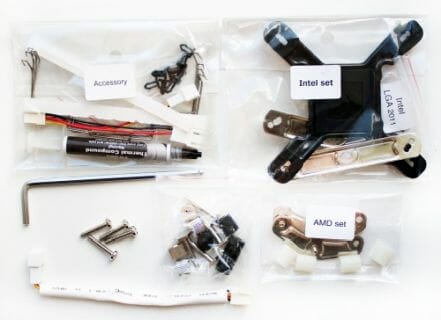
There’s an L-shaped hex key among the accessories. We’ll discuss its purpose shortly. Assembly and installation guides are included into the box as well.
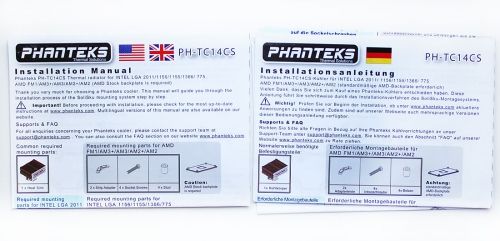
Like its predecessor, the new cooler is manufactured in Taiwan and is shipped with a 5-year warranty. The Phanteks PH-TC14CS is available in four colors: silvery, blue, red and black. The recommended price of the silvery version is $75 whereas the other three cost $5 more.
Design and Functionality
We’ve got the blue version of the cooler for our tests. It looks attractive:
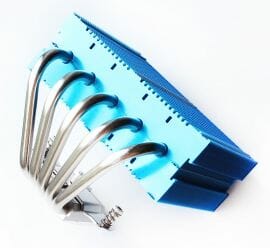
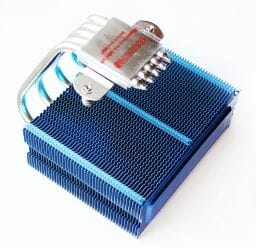
It’s easy to see that the cooler’s heatsink is exactly one half of the dual-section heatsink of the PH-TC14P? model, with five 8mm copper heat pipes.
The pipes go out of the nickel-plated copper base and pierce the whole of the heatsink in a regular pattern.
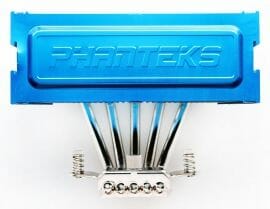
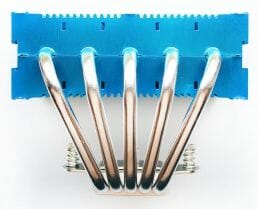

So, the Phanteks engineers just cut off one half of their super-cooler and bent the pipes in such a way that the resulting heatsink was parallel to the cooler’s base and, consequently, to the mainboard. That’s the quick and easy way to make new coolers!
The heatsink measures 143.8 x 140 x 112 millimeters. Its weight is 600 grams. Its 43 aluminum fins, placed 2 millimeters apart from each other, contact with the heat pipes by means of C.P.S.C. technology (Cold Plasma Spraying Coating) applied along the entire surface of the pipes.
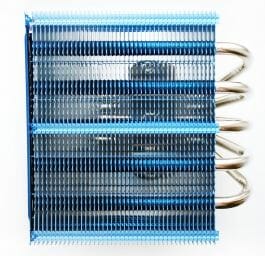
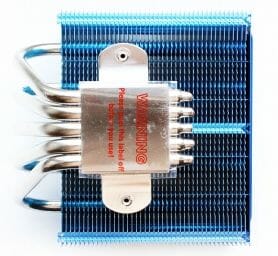
Each heatsink fin is 140×50 millimeters, so the total heat dissipation area is about 6000 sq. cm. That’s quite a lot for a down-draft cooler but the best of tower-design models have twice the dissipation area and are going to be more efficient, other factors being the same.
The pipes are soldered to the cooler’s base, although there is a small gap visible between the base and two of the pipes.
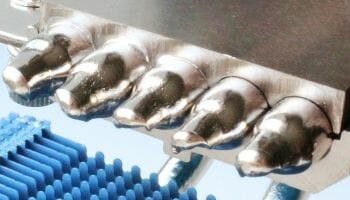
Hopefully, this gap doesn’t go deep into the base.
The finish quality is as good as that of the cooler’s senior cousin. We can see traces of the milling machine but cannot feel them by touch.
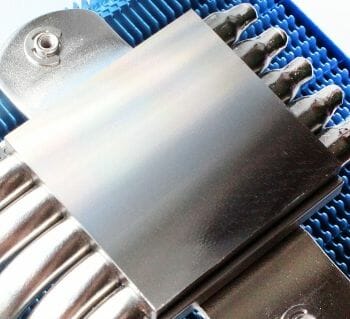
The cooler’s base is convex and we’ll discuss this more in the Tests section of our review.
The Phanteks PH-TC14CS is shipped with two 9-blade 140mm PH-F140 fans:
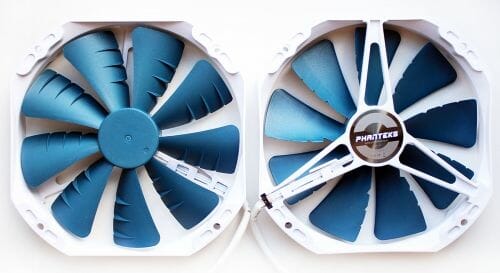
We talked about these fans in our review of the previous Phanteks and their specs haven’t changed. Their speed is PWM-regulated within a range of 900 to 1200 RPM. The maximum speed is 1300 RPM (if the PWM regulation is disabled). The rest of their specs are listed in the table above.
The electrical parameters and bearing type of the fans haven’t changed, either:
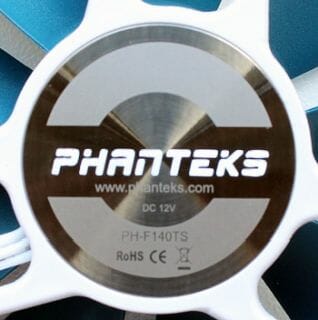
The exclusive Updraft Floating Balance bearing with balance ring is expected to last through 150,000 hours (or 17 years) of continuous operation.
There are silicone strips with one gluey side in the product box. They can be glued to the sides of the heatsink to reduce vibrations and noise.
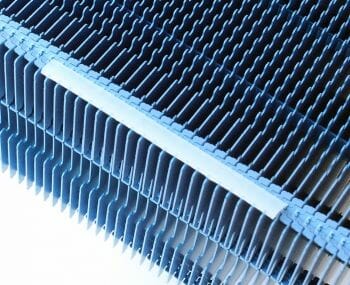
After that you secure the fans with wire brackets hooked on to the heatsink’s sides.
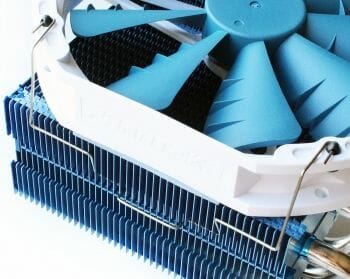
With the two fans attached, the Phanteks PH-TC14CS grows up to 161x151x140.5 millimeters and 900 grams.
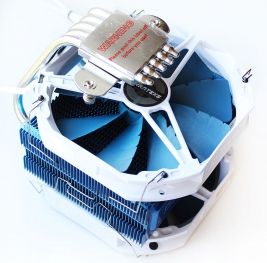
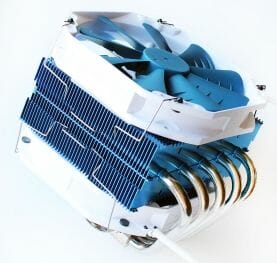
Installation and Compatibility
The Phanteks PH-TC14CS can be installed on any modern platform. Its mainboard compatibility list can be found on the manufacturer’s official website. The cooler uses the same fastening system as the dual-tower PH-TC14P?, therefore the installation instructions are the same with one exception. You have to use the included L-shaped hex key to tighten up the screws due to the horizontal orientation of the heatsink.
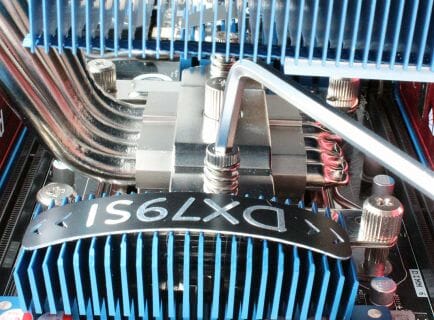
That’s not very convenient. On the other hand, the installation procedure is not as difficult as to write it down as a serious downside of this cooler.
It must be noted that the heat pipes do not conflict with memory modules as is often the case with down-draft coolers.
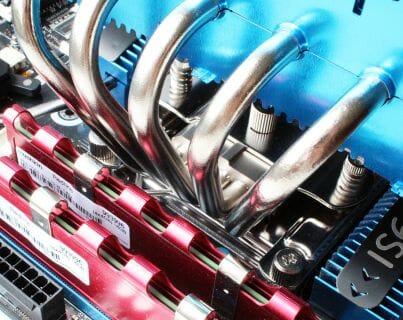
But the bottom fan is almost pressed against the heatsinks on our memory modules.

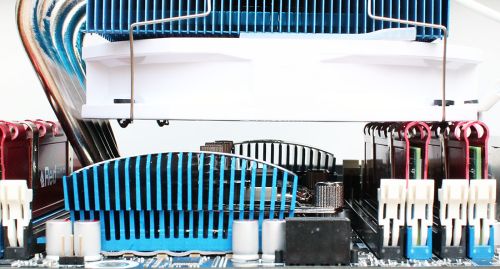
It fit in, though, as you can see.
When installed, the cooler’s heatsink covers everything around the CPU socket.
In other words, the air flow from its fans goes to all of the mainboard’s power components and even to some of the memory modules. So, the Phanteks PH-TC14CS is going to be a perfect solution for users who want these components to be cooled properly.
Installation Positions and Performance
We skip our traditional testbed description in this review because this testing wasn’t fully complete. We can only say that the testbed and our testing methods haven’t changed and the room temperature was 26°C during the test.
Since the user manual doesn’t mention the best way to orient the cooler on the CPU, we decided to check this out on our own. We first installed the cooler with its heat pipes at a right angle to the memory modules.
We set the speed of the intake and exhaust fans installed on the heatsink at the maximum 1300 RPM and were astonished at the results: the temperature of the hottest CPU core was as high as 86°C after three cycles of the first LinX pass. The test itself aborted with an error message after less than 5 minutes.
Our further attempts led to the same results with minor variations in time. Recalling that the efficiency of down-draft coolers depends on the type of the system case, especially as the Phanteks PH-TC14CS is as tall as 160 mm (with one fan), we removed the side panel of our case and ran the test once again. Unfortunately, this only affected the duration of the test, but not the cooler’s efficiency:
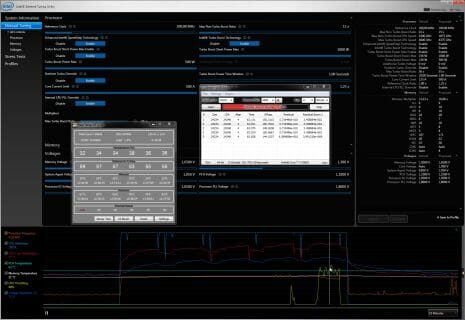
The peak temperature of 91°C and the thermal throttling of the CPU mean that there’s something wrong about the contact between the cooler and the CPU. And that’s indeed what we saw when we took the cooler off.
One third of the cooler’s convex base did not touch the CPU heat-spreader, which explains the low efficiency of the Phanteks PH-TC14CS.
Then we reinstalled the cooler after turning it around by 90 degrees clockwise so that the ends of its heat pipes were up.
Surprisingly, we got the same results if the side panel was closed: the peak CPU temperature was 86°C and LinX aborted after 7.5 minutes.
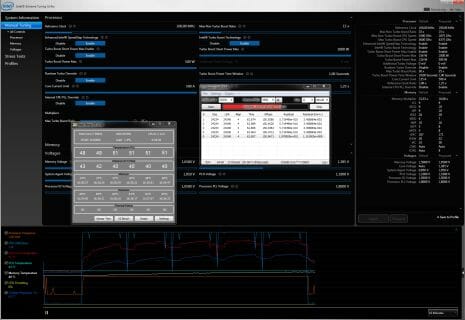
When we removed the side panel, the system passed two 11-minute tests, the CPU being no hotter than 81°C.
It’s clear that the classic layout of our ATX system case isn’t a good match for the Phanteks PH-TC14CS which requires an open testbed or at least a chassis without a side panel.
When the speed of the fans was reduced from 1360 to 1000 RPM, the CPU was again as hot as 86°C and the test aborted with an error message. This orientation of the cooler produced an acceptable thermal grease imprint, though, so poor contact could not be the cause of the poor performance.
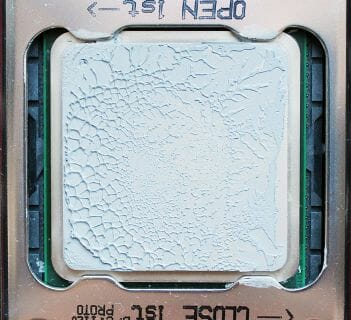
We reinstalled the cooler, checking out the pressure of its fastening mechanism and running some more tests, but couldn’t make our CPU stable at lower speeds of the fans. So, the Phanteks PH-TC14CS just can’t stand a comparison with any other cooler. Priced at $75-80, it is inferior even to the modest $40 Thermalright TRUE Spirit 140 whereas its senior cousin PH-TC14PE is 15°C more efficient under the same conditions, in a closed system case and with two quiet 135 mm fans at 900 RPM.
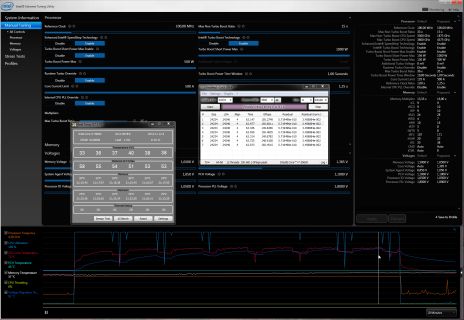
We also tried to run the Phanteks PH-TC14CS with only one fan (above or below the heatsink) but to no effect. The cooler refused to keep our CPU stable unless with two fans at the maximum speed and with the side panel of our system case removed.
Conclusion
It’s sad but this test session is incomplete just because the Phanteks PH-TC14CS turned out to be but one half of a super-cooler both from a technical standpoint and in actual performance. The small total effective cooling surface of its heatsink, the excessive height (for a down-draft cooler) with the top fan attached and, consequently, the high dependence on the type of the system case, the convex base and, possibly, the poor contact between the heat pipes and that base, the difficult installation procedure and limited compatibility – all these do not make the Phanteks PH-TC14CS such a good choice.
We can only hope that it can do better in a compact system case (with only the bottom fan installed) on a non-overclocked CPU. It may also be interesting to users who want to provide more cooling for their mainboard components and memory modules around the CPU socket. However, the high price of $75-80 makes it uncompetitive even in such limited usage scenarios. It seems to be really hard to justify an investment like that…